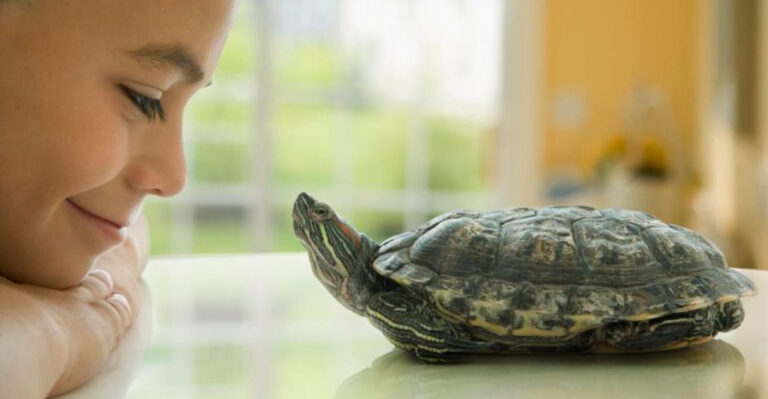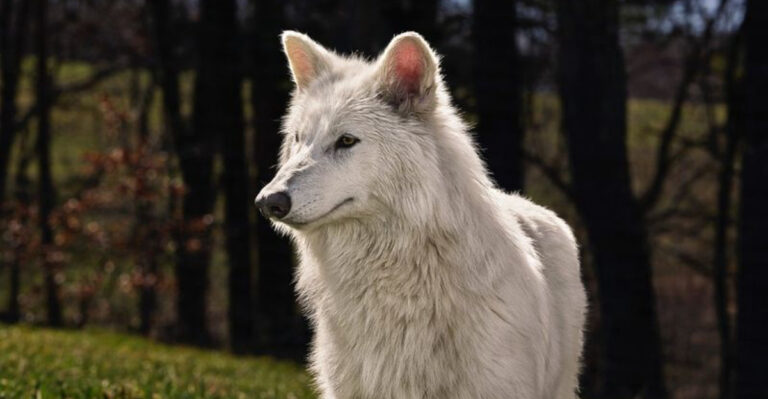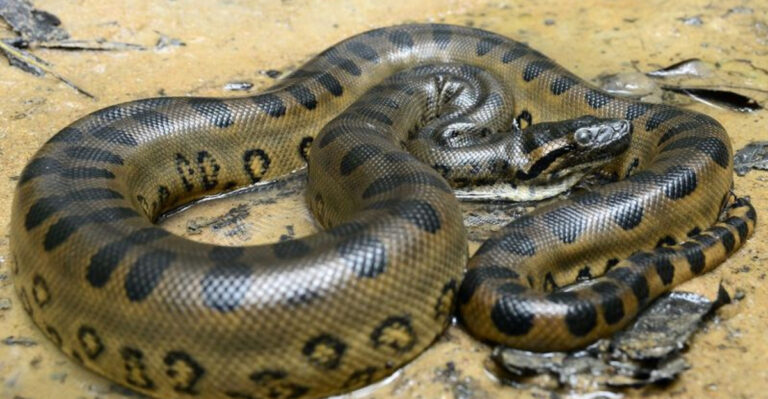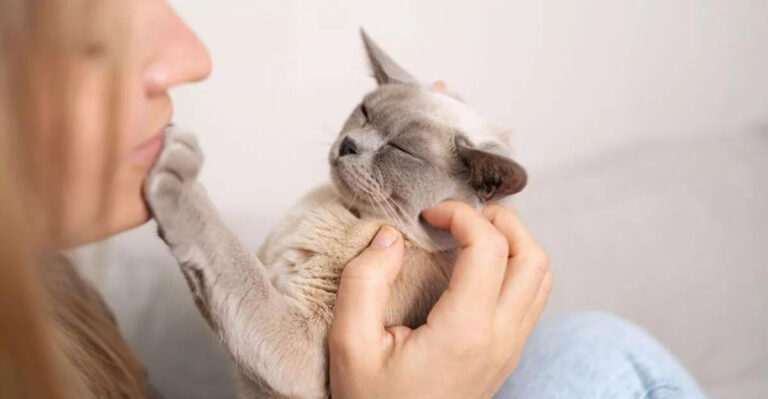11 Facts About The Rusty Spotted Cat, The Smallest Wild Cat In The World
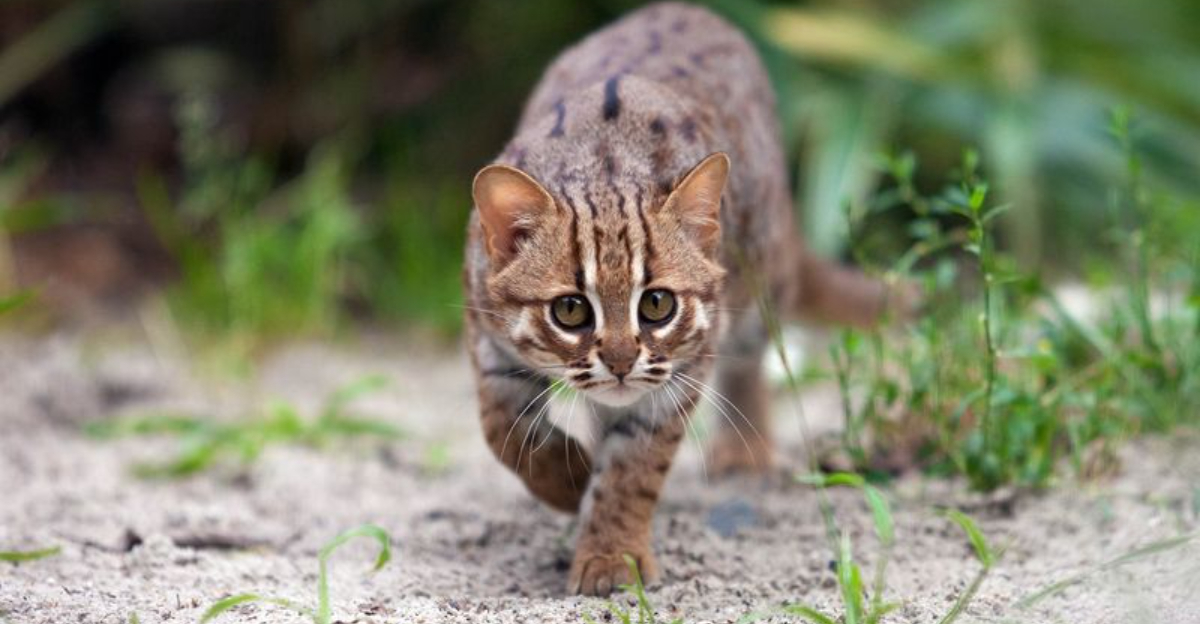
The Rusty Spotted Cat, often hailed as the tiniest wild feline, captivates with its diminutive charm and elusive nature. Native to the forests of India and Sri Lanka, this enchanting creature is a master of stealth and adaptability.
Despite its petite stature, the Rusty Spotted Cat is a formidable predator, showcasing remarkable agility and hunting prowess.
Here are some fascinating facts about this rare and mysterious cat, shedding light on its behavior, habitat, and conservation status. Join us as we journey into the world of the smallest wild cat, uncovering secrets and stories that make it truly unique.
1. Smallest Wild Cat
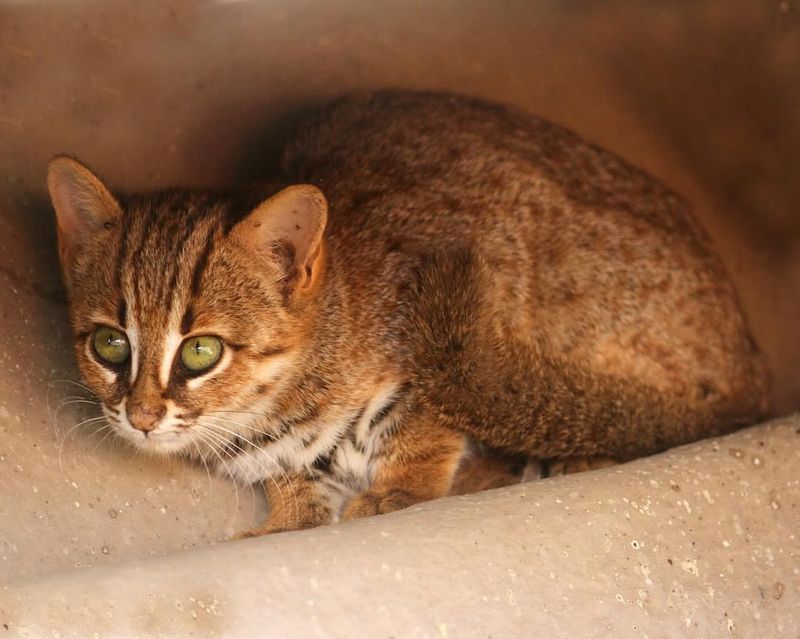
Standing merely 35 to 48 centimeters in length, the Rusty Spotted Cat holds the title of the smallest wild cat in the world. Its tail adds another 15 to 30 centimeters, making it even more proportionate. Weighing between 0.9 to 1.6 kilograms, this feline marvel is petite yet powerful.
Its size is an adaptation for its forest habitat, allowing it to maneuver through dense vegetation with ease. This compact size makes it an expert in stealth, capable of sneaking up on prey undetected.
2. Unique Fur Pattern

The Rusty Spotted Cat’s fur is a visual delight, adorned with reddish-brown spots on a greyish-brown coat. These spots are more prominent along the back, fading on the sides. The head carries distinctive dark streaks, while the underbelly is a lighter shade.
This coloration provides excellent camouflage in its natural habitat. Each cat’s pattern is unique, serving as a natural identifier among individuals. This beautiful fur not only plays a role in concealment but also in social interactions, as it can communicate age and health to other cats.
3. Habitat And Range
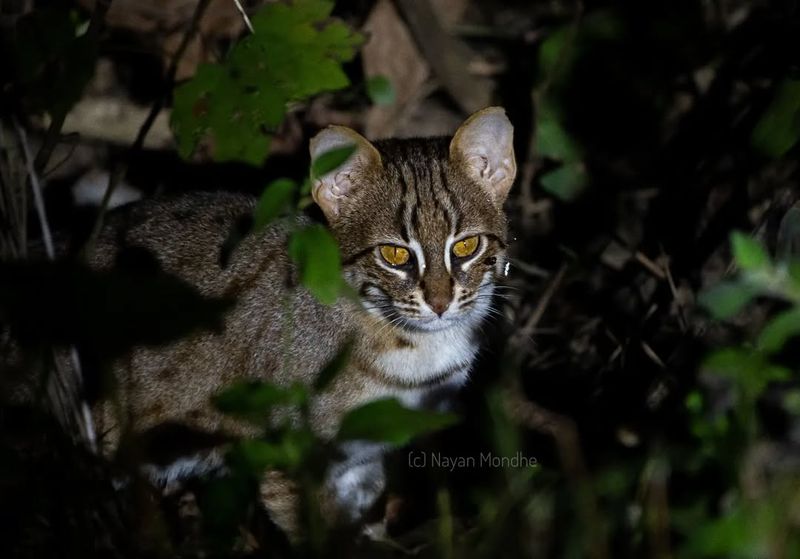
The Rusty Spotted Cat is native to India and Sri Lanka, residing primarily in deciduous forests, grasslands, and scrub lands. This adaptable feline can thrive in a variety of environments, from dense jungles to open landscapes.
It prefers areas with abundant cover to aid in hunting and escaping predators. Recent studies have shown its presence in human-modified landscapes, indicating its adaptability to changing habitats. Conservation efforts are crucial in these regions to preserve its natural habitat and ensure the species’ survival.
4. Nocturnal Behavior
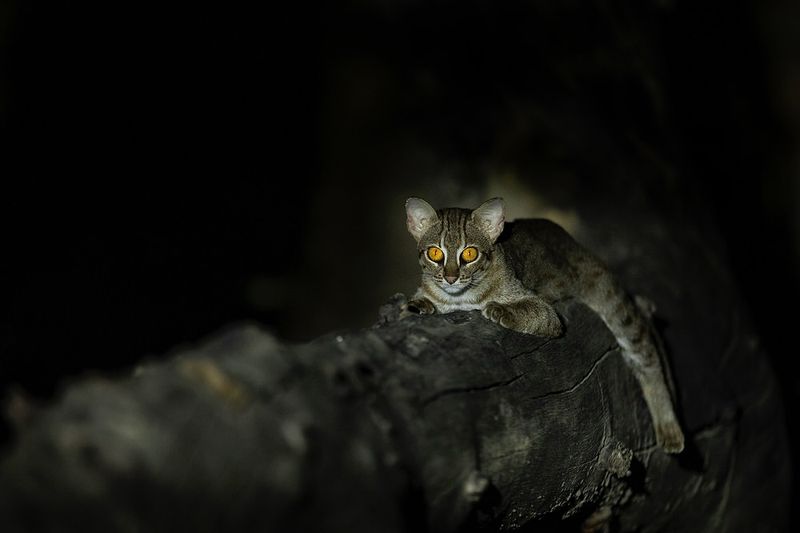
As a nocturnal creature, the Rusty Spotted Cat is most active at night, utilizing the cover of darkness to hunt for prey. Its large eyes are well-adapted for low light conditions, enhancing its night vision. During daylight, it rests in hollow logs or dense foliage to avoid predators and conserve energy.
This night-time lifestyle is a strategy to minimize competition and increase hunting success. The Rusty Spotted Cat’s nocturnal nature is a testament to its adaptability and survival instincts.
5. Diet And Hunting Skills
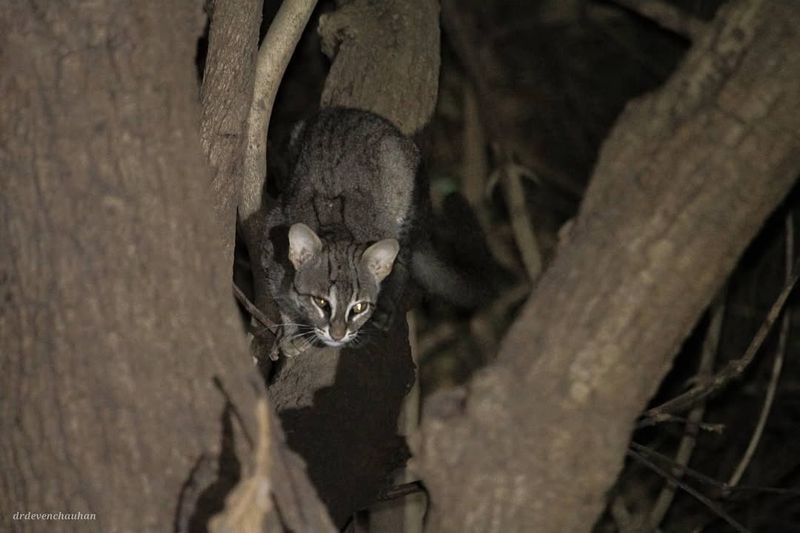
The Rusty Spotted Cat’s diet primarily consists of small vertebrates such as rodents, birds, frogs, and insects. Its hunting skills are unparalleled, relying on stealth and precision to catch prey. With a quick pounce, it can capture its target with incredible efficiency.
This cat’s agile body and sharp senses make it a formidable hunter despite its size. Hunting usually occurs at night, aligning with its nocturnal habits. Occasionally, it may climb trees in pursuit of birds or to escape threats.
6. Reproduction And Lifespan
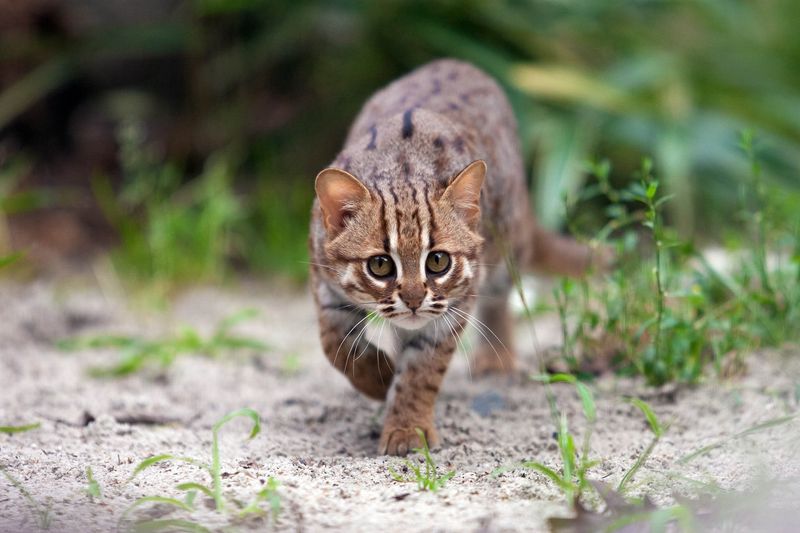
The Rusty Spotted Cat reaches sexual maturity at about one year of age. Breeding can occur year-round, with a gestation period of approximately 67 days. Typically, a litter consists of one to three kittens, born blind and fully dependent on their mother.
The mother provides care and protection, teaching her young essential survival skills. Kittens begin to explore their surroundings around six weeks and are weaned by four months. In the wild, these cats can live up to 12 years, though threats in their environment can impact lifespan.
7. Conservation Status
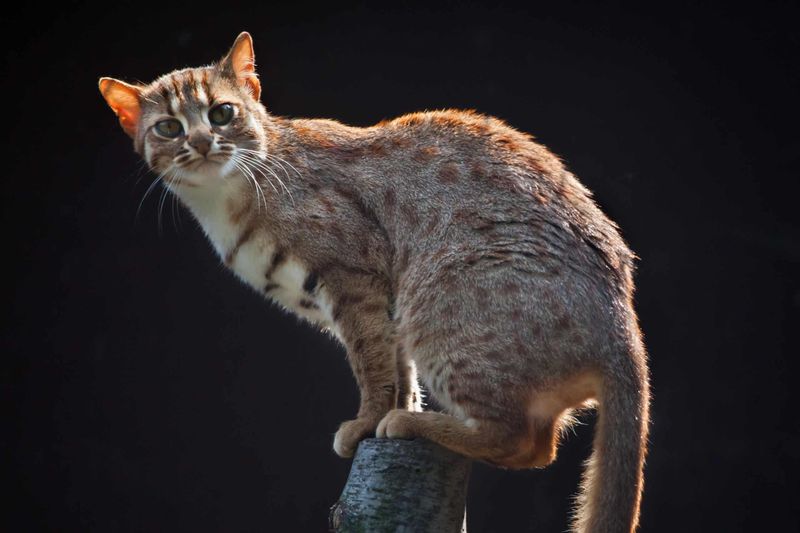
Currently classified as “Near Threatened” by the IUCN, the Rusty Spotted Cat faces several conservation challenges. Habitat loss due to deforestation, agricultural expansion, and human encroachment poses significant threats to its survival.
Conservation efforts are focused on habitat protection, research, and raising awareness about this elusive species. Protected areas and wildlife sanctuaries in India and Sri Lanka play a crucial role in their conservation. Continued efforts are needed to monitor their population and mitigate human-wildlife conflicts.
8. Adaptability To Human Presence
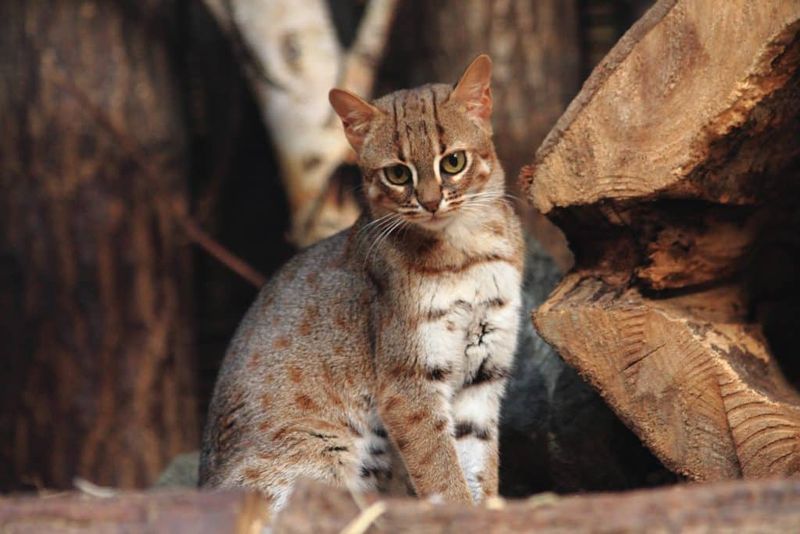
Despite its elusive nature, the Rusty Spotted Cat has shown remarkable adaptability to human presence. Sightings near villages and cultivated fields suggest it can survive in altered landscapes. This adaptability may be key to its continued existence as natural habitats diminish.
However, living close to humans can lead to conflicts, such as predation on poultry. Conservation strategies must consider human-wildlife interactions and promote coexistence.
9. Social Behavior
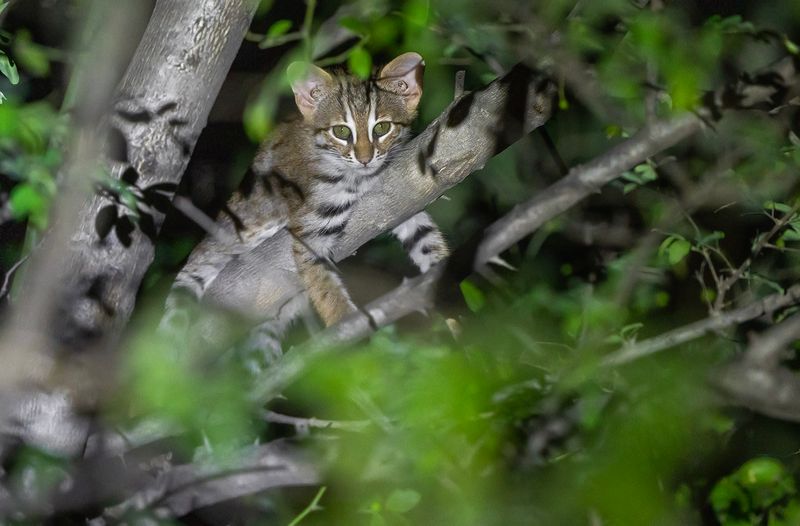
The Rusty Spotted Cat is predominantly solitary, with interactions occurring primarily during mating season. Marking territory with scent markings and vocalizations, it establishes its presence without direct confrontation.
This solitary nature reduces competition for resources, allowing each cat to maintain its own territory. Occasionally, overlapping territories may lead to brief encounters. Despite their solitary lifestyle, these cats communicate through various sounds such as growls and meows.
10. Physical Characteristics
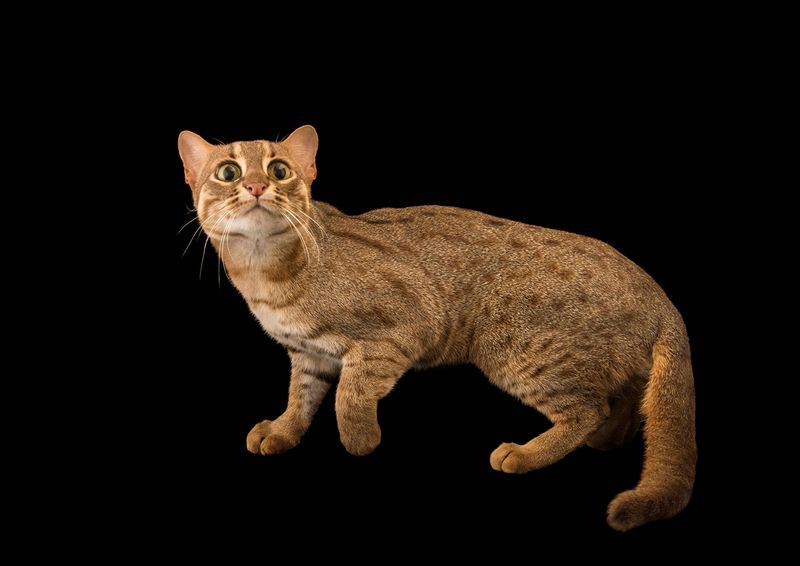
The Rusty Spotted Cat is distinguished by its small size and distinctive features, including large eyes and rounded ears. Its legs are relatively short, complementing its agile body, and its tail is marked with dark rings. These physical traits enhance its ability to navigate through dense vegetation and hunt effectively.
The cat’s keen senses are crucial for detecting prey and avoiding predators. Its compact form is an adaptation to its environment, allowing it to move stealthily.
11. Cultural Significance
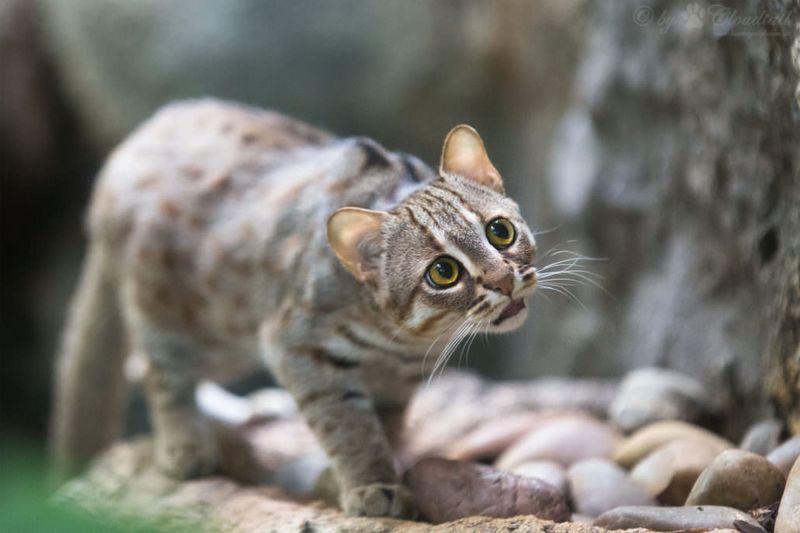
In regions where it resides, the Rusty Spotted Cat holds cultural significance. Often featured in local folklore, it symbolizes agility and mystery. Its elusive nature has inspired stories and myths, contributing to its mystique.
Some cultures regard it as a symbol of independence and strength due to its solitary lifestyle. This cultural connection can aid in conservation, as local communities may be more inclined to protect a species that holds traditional value.


